Posted: June 25th, 2012 | No Comments »
Another half year gone!! A few fiction and pulp reads from the first half of the year that come recommended and might be good for the summer months…
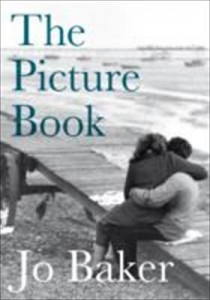
The Picture Book – Jo Baker – a truly great series of episodic pieces that trace the history of Britain from the First World War through various slices of life affecting one London family.
The Greatcoat – Helen Dunmore – I’m a serious fan of Dunmore’s and this book is both a lilting ghost story as well as an evocation of the war years and the immediate post-war provincial Britain. It’s hard to read The Greatcoat and not be reminded of Sarah Walters’s The Little Stranger but that’s OK – to read one good writer and be reminded of another is not a problem.
Waiting for Sunrise – William Boyd – Boyd is always a delight and, after a very slow start (but stick with it) Waiting for Sunrise moves into the territory of the classic interwar British spy novel. Think Somerset Maugham’s Ashenden, John Buchan, GK Chesterton, Erskine Childers. Lysander is a great Boyd character.
The Girl in Berlin – Elizabeth Wilson – Wilson’s latest book in part follows familiar territory – London after the war, austerity Britain, England on its post-war uppers – but is more of a spy thriller than her previous books. As ever it is Wilson’s attention to detail (she’s a specialist in fashion and popular culture) that most fascinates.
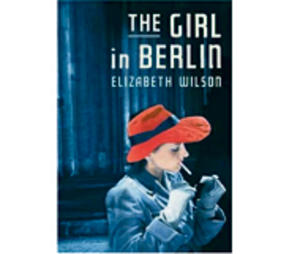
Pure – Andrew Miller – a real joy to read, it flows as effortlessly as shit and offal through a sewer, which is sort of appropriate. A wonderful evocation of pre-Hausmann Paris when the city still lingered as a sprawling Medieval mess.
Visitation – Jenny Erpenbeck – for the first third of this book, really a novella, from the East German writer I wondered why I was bothering. Then Erpenbeck suddenly kicks in with passage s of staggering imagery and the ability, rare in books, to pull you up sharp in surprise and shock. A masterclass in taut writing.
Bereft – Chris Womersley – a solid Australian thriller that mostly held my attention apart from when it drifted into the, perhaps, paranormal. However, as descriptions of London seances in 1919, returning diggers to Oz after the horrors of the trenches and Gallipoli, small town corruption in rural Australia go, it’s a good read.
Grub – Elise Blackwell – just released on Kindle in 2011 so I only just discovered this modern reworking of Gissing’s Grub Street. The depression and obsession of people silly enough to want to be professional writers. Cringingly accurate in its depiction of the money deprived, contract deprived world of wanna-be authors who refuse to give up and get proper jobs.
The Pulps
Luther: The Calling – Neil Cross – quite simple really – if you liked the TV show you’ll love this book which has Idris Alba all over it. Cross is a man who goes down into the sewers of human activity but what could just be shock is saved by the modern urban Gothic nature of his London and its warped and twisted inhabitants. More please!
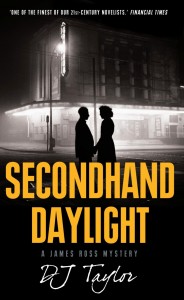
Secondhand Daylight – DJ Taylor – I liked Taylor’s previous 1930s novel At The Chime of a City Clock and this is in the same vein and features the intersting character of James Ross – man about town, a bit literary, a bit gun for hire, a bit of a drifter through 1930s London. Taylor has a tendency to rather over-egg the pudding with research and you find yourself screaming “less is more” now and again but it’s fun – Soho, the BUF, working girls, seances and loads and loads of detail for the train spotters.
Choke Hold and Money Shot – Crista Faust – Last year I really got into Megan Abbott and her noir writing and this year I discovered Crista Faust. Abbott’s noirs are set in the 1930s and 1940s, Faust is contemporary. She writes well and the plots crack on among the slime of the LA porno industry and her heroine Angel Dare. They’re a lot of fun, hard as nails and with some funny touches.
Angle of Investigation & Suicide Run – Michael Connelly – I’m an avid Harry Bosch fan and can take all the Bosch that can Connelly can throw at me. I’m also finding myself enjoying short stories more these days (it’s a Kindle thing I think). So these two collections of Harry Bosch shorts that really advertise the new novel, The Drop, are terrific reading. So that’s 6 Bosch shorts and I still wanted more, so obviously I bought The Drop!! Connelly’s plan worked.
Posted: June 25th, 2012 | 2 Comments »
An interesting book from the ever prolific Paul Van Dyke who has done more to enlighten us on the foreign trade in southern China than anyone else really…
Edited by Paul A. Van Dyke
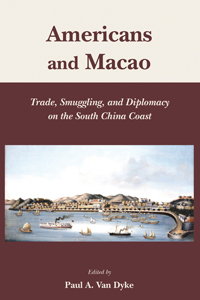
The theme of this volume is the American relationship with Macao and its region through trade, politics, and culture, and the focus is mainly on the late eighteenth and nineteenth centuries. The essays address topics such as the role of the China trade in US pacific expansion and exploration, US consuls, smuggling networks, American women’s perceptions of China, and missionary and educational work. In all of the encounters, Macao emerges as a central player, adding a new dimension to our understanding of Sino-American relations.Paul A. Van Dyke is professor of history at Sun Yat-sen University in Guangzhou. He has spent many years researching various aspects of life, trade, and societies in the Pearl River Delta and Maritime Asia.”Significantly, gambling and casinos merit almost no notice in
Americans and Macao. Instead, this intriguing collection of essays illuminates sometimes brilliantly the complex intersections among Americans, Macao, and the structures and processes of globalization that converged in the waters off the South China coast in the late eighteenth and early nineteenth centuries.” — Paul A. Cohen, Fairbank Center for Chinese Studies, Harvard University
“A lively and important volume both for its focus on Macao and for its treatment of the pre-treaty port period as a matter of Sino-American relations rather than as just the Old China Trade.” — James Fichter, author of So Great a Proffit: How the East Indies Transformed Anglo-American Capitalism
Posted: June 24th, 2012 | 7 Comments »
A small article popped up in the China Daily recently about Xu Yinpei the architect behind Mao’s Mausoleum in Tiananmen Square. Of course as any fool can see they basically copied the Lincoln Memorial in Washington DC; Xu says not of course but anyone with eyes!! – apparently the State Council told Xu “the memorial should be solemn, aesthetically pleasing and blend in traditional Chinese elements but shouldn’t look like imperial emperors’ tombs,”. In perhaps the funniest quote of the year so far Xu, who did visit Washington and saw the Lincoln Memorial says, “When I saw the building (the Lincoln Memorial), I said to myself: ‘What a coincidence!'”. Yea sure Architect Xu – we believe you. Also, rather amazingly, Xu claims that “More than 700,000 laborers” worked on the Mausoleum, which even for The Great Helmsman’s final resting place seems a rather excessive amount of construction guys!! Anyway here’s the article.
 Mao’s Mausoleum in Tiananmen Square
Mao’s Mausoleum in Tiananmen Square
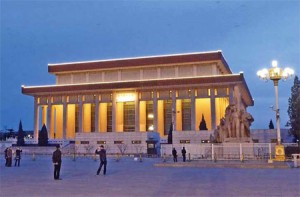 The Lincoln Memorial in Washington DC
The Lincoln Memorial in Washington DC
or maybe it’s the other way round…what a coincidence!!
Posted: June 24th, 2012 | No Comments »
RAS LECTURE
Tuesday 26th June 2012 at 7.00pm
The Tavern, Radisson Blu Plaza Xingguo Hotel 78 Xing Guo Road, Shanghai
兴国宾馆上海市兴国路78å·
PROFESSOR WAYNE PATTERSON
ON
Sir Robert Hart, Maritime Customs, and the Beginning of Korea’s “Chinese Decade”, 1880-1888.
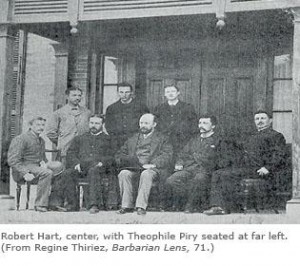
When discussing Korea’s “Chinese Decade”, roughly defined as the dozen or so years prior to the Sino-Japanese War of 1894-1895, most of the attention is focused on the heavy-handed activities of Yuan Shikai in Seoul. Less well known is that part of this Chinese effort to bind Korea more closely to China involved the absorption of Korea’s newly-formed Maritime Customs Service and the key roles played by Sir Robert Hart, Li Hongzhang, Henry F. Merrill, and Paul Georg von Mollendorff. Using the recently-discovered correspondence of the first commissioner of customs in Pusan, this talk will discuss some heretofore unknown aspects of this attempted takeover by China, and is based on the author’s recently-published book, In the Service of His Korean Majesty: William Nelson Lovatt, the Pusan Customs, and Sino-Korean Relations, 1876-1888 (Berkeley: University of California Institute of East Asian Studies Korea Monograph Series 35, 2012).
Wayne Patterson received his undergraduate degree in history from Swarthmore College and his graduate degrees in both history and international relations from the University of Pennsylvania. He is the author or editor of thirteen books, and has been a visiting professor at Harvard University, the University of Pennsylvania, Vanderbilt University, the University of Hawaii-Manoa, the University of South Carolina, the University of Maryland, the University of Kansas, the University of Wisconsin-Madison, the University of California-Berkeley, and abroad at Yonsei University, Ewha University, Korea University, and the University of the Philippines-Diliman. He is currently professor of modern East Asian history at St. Norbert College in Green Bay, Wisconsin.
Entrance: RMB 30.00 (RAS members) and RMB 80.00 (non-members). Those unable to make the donation but wishing to attend may contact us for exemption, prior to the RAS Lecture. Membership applications and membership renewals will be available at this event. Members will have priority booking until 24 June 2012.Â
To RSVP:Â Please “Reply” to this email or write to
RAS Bookings at: bookings@royalasiaticsociety.org.cn
Posted: June 24th, 2012 | No Comments »
Some stills from a 1942 United News newsreel on the bombing of Chungking in 1942 – the second or third year the Chinese capital had suffered aerial bombing.You can see the newsreel here. Of course (plug, plug) if you’re interested in wartime Chungking then you should see the Carl Crow War Diaries I edited a couple of years ago of his 1940 trip up the Burma Road and several months spent under the Blitz in Chungking.
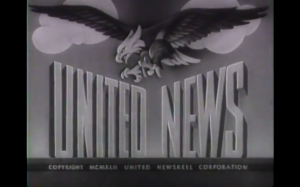
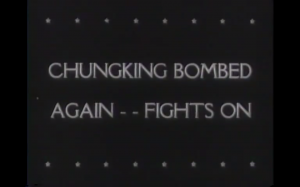
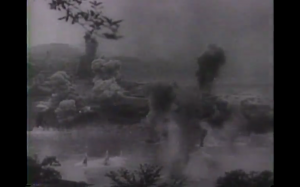 Bombs drop across the city…
Bombs drop across the city…
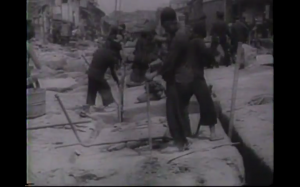 Cleaning up the city after the bombings…
Cleaning up the city after the bombings…
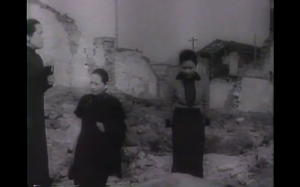 the Soong sisters inspect the bomb damage…
the Soong sisters inspect the bomb damage…
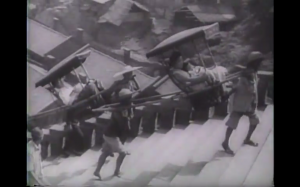 normal life continues with the incredible uphill sedan chair carriers still working…
normal life continues with the incredible uphill sedan chair carriers still working…
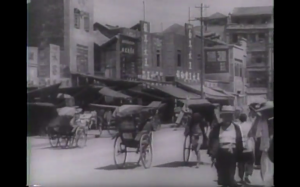 the streets of Chungking….1942
the streets of Chungking….1942
Posted: June 23rd, 2012 | No Comments »
Thanks to the Twitterverse arguing about Chinese claims to various islands in the South China Sea I discovered re tweets and re-tweets that an old essay of mine on South China Sea pirates both old and new in the Asia Literary Review is now posted online…
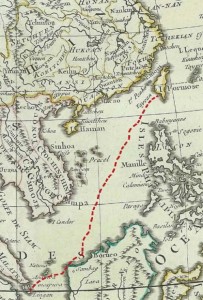
Posted: June 23rd, 2012 | No Comments »
Talking of the Museum of London the other day (Chinoiserie elevators would you believe) I was rather hoping to show you an image of a fan they have from the Imperial Restaurant in London that dates back to about 1900-05 – a lovely object, a good bit of advertising and one of London’s most famous old Chinese eateries. However, I don’t have that image but I did find this…
A gorgeous fan from about 1727 and made in London by William Werndly who’s shop, The Golden Fan, was in Leicester Square. Its ivory sticks and chinois motif would have made it expensive, much more expensive than the cheaper Chinese fans then being imported into England from China by entrepreneurial merchants. How great would it have looked waved around by a beautiful woman at the theatre or the pleasure gardens??
More details here…
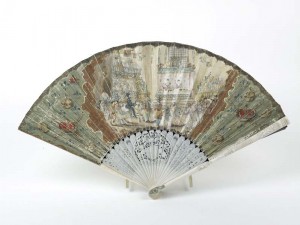
Posted: June 22nd, 2012 | No Comments »
Regular readers will know I mentioned the Poseidon Project previously as they were trying to raise money to finish this excellent looking documentary on a sunken British sub in China – more below. Just to let you know you can still donate to the project and there are several videos about HMS Poseidon online too at Vimeo to look at.
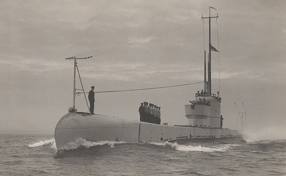
THE POSEIDON PROJECT
On June the 9th 1931, one of Britain’s most advanced submarines collided with a cargo ship off the coast of China. Half of the crew escaped in the first few seconds, but the rest of the men sank 40 metres down to the bottom of the sea, entombed in their boat. Three hours later, six sailors surfaced, barely conscious and bitterly cold, as their comrades watched on in amazement. They were the first men ever to escape alive from a sunken submarine using a proto-scuba device.
Beijing-based journalist and part-time scuba instructor Steven Schwankert was looking for interesting wrecks to dive in northern China when he found HMS Poseidon on a list of unexplored dive sites. His private obsession with bringing wreck diving to China became a public and personally high-risk mission to uncover a secret history of political intrigue that took him half way across the world in search of evidence.
Their story hit newspaper headlines worldwide and went on to inspire a feature film, released later that year. Their miraculous escape changed marine safety forever, leading to a revolution in submarine design and a big leap forward in our understanding of decompression sickness. But their names, and their submarine, gradually sank into obscurity.
Steven Schwankert’s six-year search for the submarine revealed a story that was far more complicated than he had first expected, challenging official accounts of the escape, and uncovering the truth behind the forgotten wreck.
www.poseidonprojectfilm.com
















